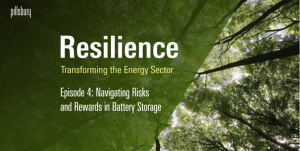In our latest roundup, tech giants invest in new data centers, senators introduce bill aimed at price-setting algorithms, DoD stops PLA requirements, and more!
Family Offices May See SEC and Tax Treatment Changes Under Trump
The possibility of a second Trump administration heralding significant regulatory and tax policy changes for the ultrawealthy and their family offices is, to put it mildly, substantial.
For decades, family offices have operated within an opaque legal framework marked by limited guidance, oversight, or public disclosure. They also have navigated a labyrinthine tax code riddled with uncertainties. Trump 2.0 could fundamentally alter this landscape, even if Congress takes little to no legislative action.
Real Estate & Construction News Roundup (2/5/25) – The Effect of Trump’s Policies on the Housing Market, Property Value Loss in the Face of Climate Change, and a Transitional Year for the Apartment Market
In our latest roundup, Southern California wildfires impact supply chain, higher material prices threaten future project demand, commercial real estate distress strains regional banks, and more!
Real Estate & Construction News Roundup (1/28/25) – FTC Suing Greystar, DOJ Investigating Top Residential Landlords and Trump Facing Housing Conundrum
In our latest roundup, construction technology funding stabilizes, office vacancies hit new high, builders outline recommendations to Trump, and more!
Something Biden and Trump Can Agree On?—Data Centers, AI and Energy Generation
 Last week, on one of his final days in office, President Biden signed an executive order aimed at boosting the development of energy facilities and data centers for artificial intelligence (AI) technology. Executive Order 14141 directs the secretaries of Defense, Energy and the Interior to lease sites on federal land to private sector companies for the purpose of building data centers and energy generation and transmission facilities. Noting that AI technology has become, and is expected to remain, a “defining technology of our era,” and that both economic and national security risks could arise if the United States falls behind in the race to build AI infrastructure, the Order seeks to reduce regulatory barriers to these projects by speeding the permitting process, and ambitiously seeks to enable construction at these federal sites to commence by January 1, 2026.
Last week, on one of his final days in office, President Biden signed an executive order aimed at boosting the development of energy facilities and data centers for artificial intelligence (AI) technology. Executive Order 14141 directs the secretaries of Defense, Energy and the Interior to lease sites on federal land to private sector companies for the purpose of building data centers and energy generation and transmission facilities. Noting that AI technology has become, and is expected to remain, a “defining technology of our era,” and that both economic and national security risks could arise if the United States falls behind in the race to build AI infrastructure, the Order seeks to reduce regulatory barriers to these projects by speeding the permitting process, and ambitiously seeks to enable construction at these federal sites to commence by January 1, 2026.
AI Needs Critical Materials, Fast! But From Where?
Critical materials—the collective term for metals and minerals essential for all kinds of advanced technology and clean energy—are vital to the growth of artificial intelligence (AI), which has become pervasive in everyday life. AI hardware relies on familiar elements like aluminum, silicon and copper, and unfamiliar elements like gallium, germanium, palladium and neodymium to support the computational power, data transmission, and cooling systems required to process vast amounts of data at high speeds.
Resilience: Transforming the Energy Sector – Navigating Risks and Rewards in Battery Storage | Episode 4 (12.18.24)
 In the newest episode of Resilience, Pillsbury’s Shellka Arora-Cox and guest Adam Hise, Managing Director of Storage Risk Solutions for Ascend Analytics, dive deep into the evolving world of battery storage, market volatility, and how companies are navigating risk in a dynamic energy landscape.
In the newest episode of Resilience, Pillsbury’s Shellka Arora-Cox and guest Adam Hise, Managing Director of Storage Risk Solutions for Ascend Analytics, dive deep into the evolving world of battery storage, market volatility, and how companies are navigating risk in a dynamic energy landscape.
Trump 2.0: Electric Vehicles (EVs) and Emissions Requirements
In a potential blow to the fledging EV transition, reports have noted that the Trump transition team is planning to terminate the $7,500 consumer EV credit, an action publicly supported by Elon Musk.
Real Estate & Construction News Roundup (12/4/24) – Highest Rate of Office Conversions, Lending Caps for Fannie Mae and Freddie Mac and Affordability Challenges for Homebuyers
In our latest roundup, infrastructure-related ballot initiatives, U.S. Green Building Council’s success stories, support for sustainable building, and more!
Prime Contractors, Subcontractors and the Role of Default Notification in SDI Coverage
Subcontractor Default Insurance (SDI) is marketed as a substitute for a subcontractor performance bond, providing coverage for a prime contractor’s losses due to a subcontractor’s failure to perform on a project. In a recent article for the American Bar Association, colleagues Michael S. McNamara and Lexie R. Pereira dispel a common misconception regarding whether a subcontractor must be declared in default to trigger SDI coverage under several common policy forms.
To read “The Silent ‘D’ in SDI: Subcontractors May Not Need to be Notified of Default for Prime Contractors to Receive Subcontractor Default Insurance Coverage,” click here.




